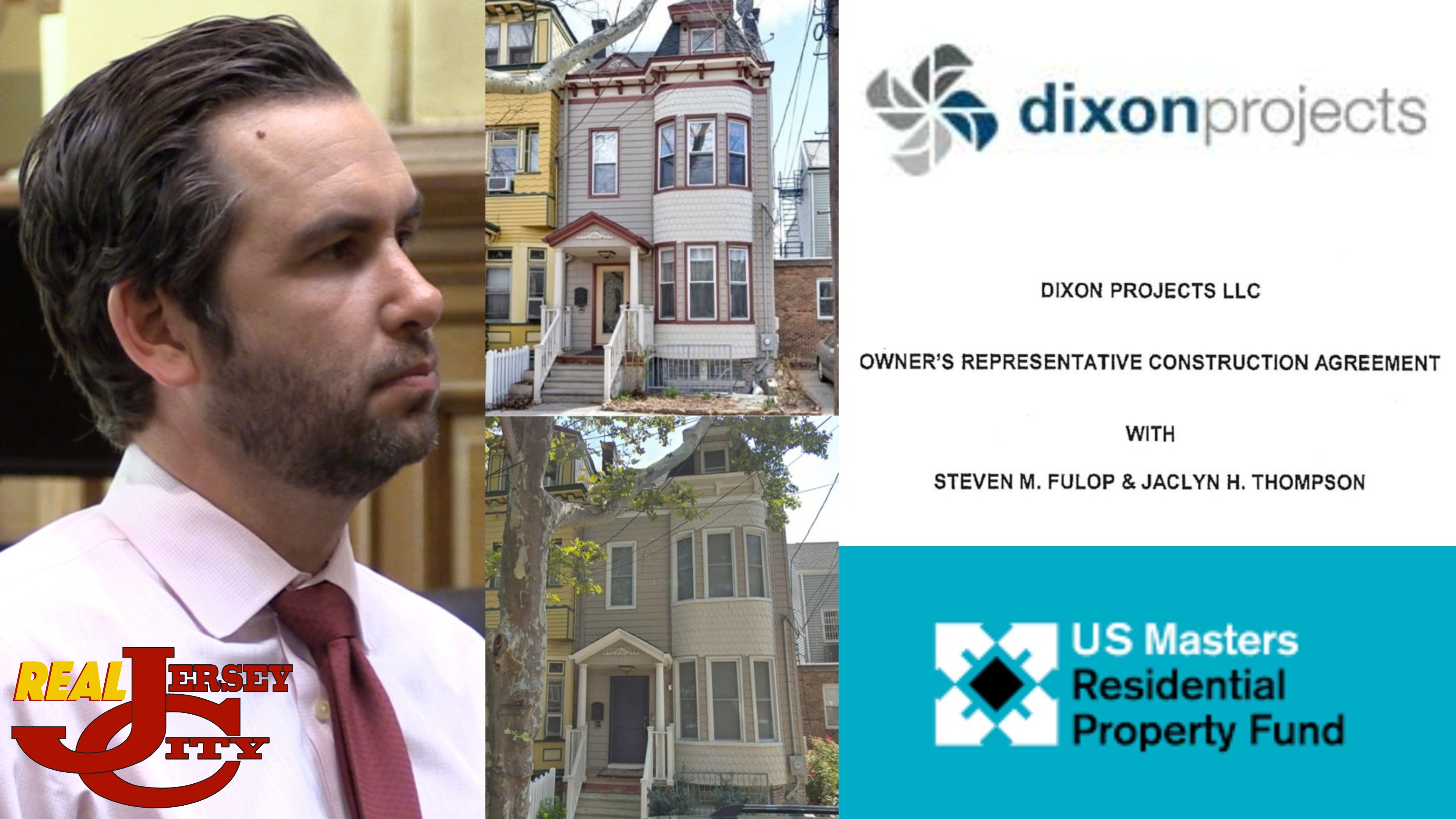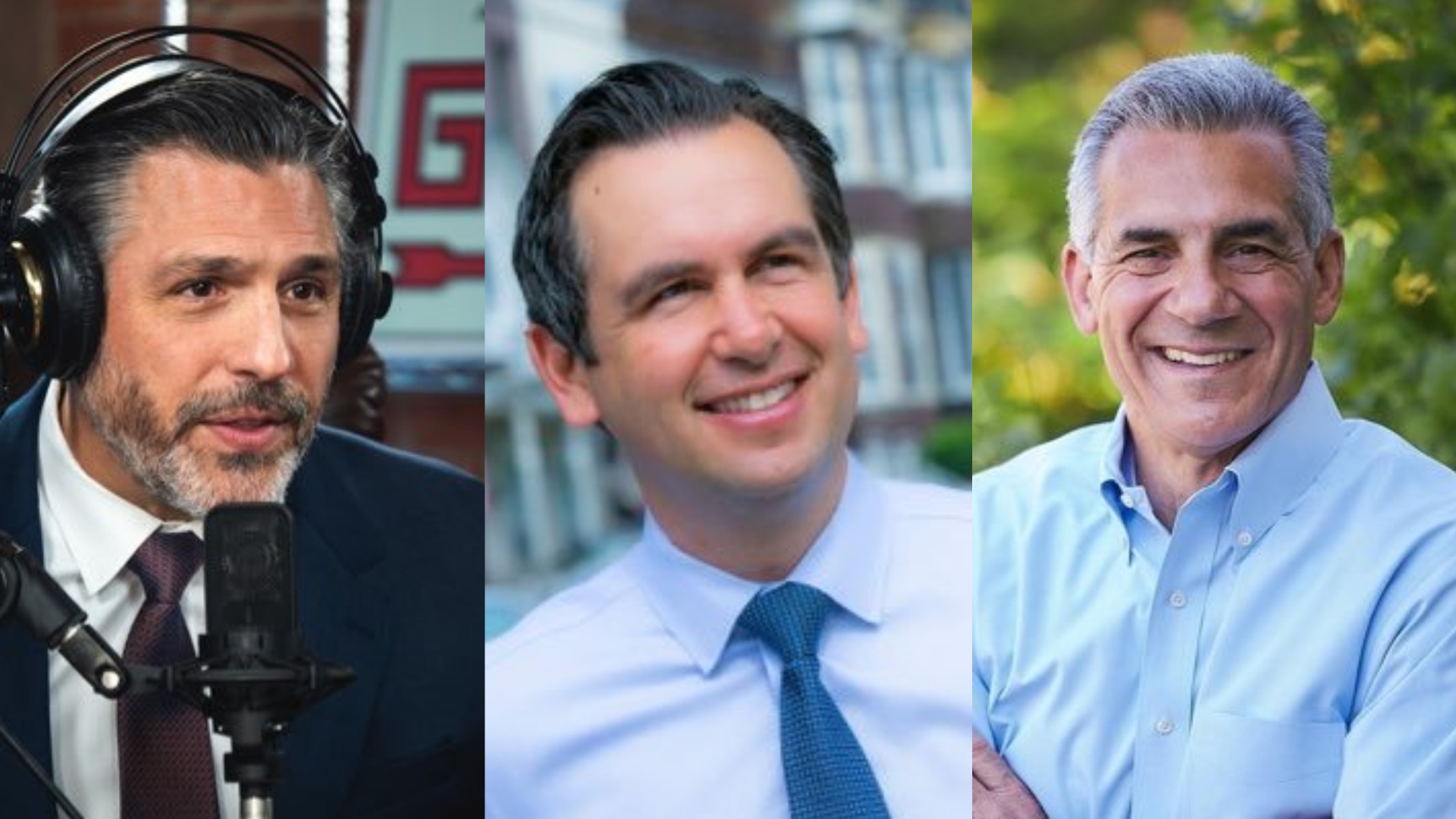In December of 2015, as his administration fought new tax assessments that would’ve negatively impacted Dixon Advisory, Mayor Steven Fulop signed a $485,000 home renovation contract with the firm’s project management subsidiary – potentially at a massive discount compared to Australian URF investors.
In light of a recent report by The Australian Financial Review (AFR) highlighting the staggering fees charged to Australian investors during a “renovation rampage” by Dixon Projects over the past five years, unanswered questions surrounding Mayor Steven Fulop’s $485,000 Owner’s Representative Construction Agreement with the firm for his Ogden Avenue home has renewed significance.
Specifically, the two most important questions that need to be answered are: 1) Who paid who?; and 2) What exactly did they pay for?
Who is Dixon Projects & Coastal?
Dixon Projects is the construction and project management subsidiary of Dixon Advisory USA – which is the U.S. subsidiary of Evans Dixon Limited, an Australian financial services firm which was established in February 2017 through the merger of Evans & Partners and Dixon Advisory.
The U.S. Masters Residential Property Fund (URF) is a Real Estate Investment Trust (REIT) listed on the Australian Securities Exchange (ASX) which owns approximately $475 million worth of property in New Jersey (primarily Jersey City/Hudson County).
The URF is a financial product that was established by Dixon Advisory in 2011 and is managed by its U.S. subsidiaries – which charge the REIT heavy fees. Of interest to this story, Dixon Projects charges a fee of approximately 20% of construction costs for developing URF-owned properties.
Coastal Points Construction (Coastal) is a contractor that works on several URF properties for Dixon Projects. For example, according to the website CheckPermits.com – 37 out of 53 completed projects in New York City between 2009-2017 done by Coastal were for Dixon.
Fulop signs Owner’s Representative Construction Agreement with Dixon Projects in 2015
On December 3, 2015, before they were married, Steven Fulop & Jaclyn Thompson signed a $485,000 contract with Dixon Projects to renovate their Ogden Avenue home – according to a permit log obtained on July 2, 2018, via an Open Public Records Act (OPRA) request with the City of Hoboken.
The OPRA was filed in Hoboken because, due to state law, Fulop (as mayor) had to do his permits with a separate municipality’s building department to avoid a conflict of interest.
The Owner’s Representative Construction Agreement states that Dixon is the “Owner’s Representative,” and part of its duties was to “establish a working relationship with Trade Contractors necessary to perform the work, enter into Trade Contracts with said Trade Contractors, and provide its knowledge, expertise, experience, and capabilities.”
To be clear, the contract states that Steven Fulop & Jaclyn Thompson (as Owner) pay Dixon (Owner’s Representative).
According to the contract, the owner was supposed to pay $400,000 for “hard construction costs” and $85,000 for “fixtures and fittings” for a total of $485,000. An initial payment of $85,000 was due within 14 days of the contract being signed, and $100,000 at the end of the next four months (January-April 2016).
According to the permits, estimated construction costs were $329,500 for interior renovation with a small addition, $5,000 to replace a sewer connection, $15,000 for HVAC, $25,000 for piping, and $25,000 for electric wiring – totaling $399,500.
That means if $85,000 worth of “fixtures and fittings” were purchased, and the contract’s payment schedule was followed without deviation, there was about $500 of profit for Dixon Projects.
Of note, months before Fulop signed a contract with Dixon Projects, Tom Bertoli, a building expediter and infamous political operative linked to the mayor, apparently worked on the initial “interior demolition for architect inspection.” It’s not clear whether he performed expediting services for Fulop related to the project beyond that point (August 2015).
Contract timing flames ‘conspiracy’ around 2015 tax fight
As reported by Terrence McDonald of the Jersey Journal on December 17, 2015, Dixon owned at least two dozen of 485 properties that Fulop attempted to cancel new assessments for that would’ve resulted in higher tax bills. The Hudson County Board of Taxation ultimately denied the appeal, of which five of the top six properties facing the largest tax hikes were owned by Dixon.
Adding perspective to the story, one tax expert told McDonald that “in all my years I’ve never experienced this,” another city official said “it’s f***ing absurd.” The city would’ve lost $1.4 million in revenue had Fulop been successful, per the report, and a request for comment from Dixon was not returned at the time.
As for what “triggered” the added assessments, the report notes that “significant home renovations” would be one reason in order to “bring a property’s assessment in line with its actual value” – which is initiated after the tax assessor is notified of construction permits and project completion.
Furthermore, given that the time between Fulop signing the Dixon Projects contract and McDonald’s tax appeal story was 14 days, one doesn’t have to be a conspiracy theorist to ask whether the situation posed a conflict of interest.
That said, on September 10, 2018, Fulop personally responded to a Real Jersey City email sent to Jersey City spokesperson Kimberly Wallace-Scalcione asking about that potential conflict of interest.
Specifically, Fulop wrote “no conflict of interest as it would be a stretch to say the mayors actions were focused on Dixon.”
“There were 400+ other property owners equally impacted by the administration’s plans you referenced and the mayor doesn’t even know who the individual owners are of any or those properties prior… Furthermore you know the outcome of that. There was zero special treatment to anyone and while I know this doesn’t fit with your conspiracy theories you chase, it does happen to be accurate and hopefully you report it as such.”
Fulop response leaves more questions than answers
Until Fulop replied to the email on September 10, 2018, the mayor and his spokesperson had never responded to a request for comment on a Real Jersey City story. Given that part of the response from Fulop related to the conflict of interest was written in third-person, it’s safe to assume Wallace-Scalcione helped craft it – unlike the rest of the email.
Regarding Dixon Projects, Fulop said they were “a JC based company that has no contracts or business with the city,” that they “do beautiful work on single family home renovations,” and “are probably the best at that sort of renovation in NY and NJ due to the number of renovations.”
Yet, Fulop also said that “in the end we hired someone else to actually do the construction work,” but “would hire them again (Dixon Projects) and refer them to anyone looking to do what we did.” Upon further questioning of that statement, based on the construction permit filed by Coastal, Fulop said he “used both Coastal and Dixon.”
The response is certainly questionable given that, as previously noted, Coastal is a contractor that works for Dixon Projects. As well, Dixon Projects does construction and project management, and, once again, the contract specifically states they were to “establish a working relationship with Trade Contractors necessary to perform the work, enter into Trade Contracts with said Trade Contractors, and provide its knowledge, expertise, experience, and capabilities.”
Unless paperwork was never updated in Hoboken, and there was a direct contract with Coastal, it’s hard to understand what Fulop means when he says he “hired someone else for construction,” but that he “used both Coastal and Dixon.”
Which goes back to the two questions from the beginning of this piece – 1) Who paid who?; and 2) What exactly did they pay for?
Who paid Coastal – was it Fulop or Dixon? Did Fulop pay Dixon Projects the full $485,000? Who paid the other subcontractors (plumbing, electric, etc.) – Dixon Projects or Coastal?
Most importantly, how did Dixon Projects make a profit off of their contract with Fulop? According to the AFR, “Dixon Projects essentially has one client, URF, which is also controlled by Dixon. It operates on a cost-plus model and adds a mark-up of about 22.5 percent on any development after it has charged architecture and design costs.”
Granted that Fulop had his architecture and design work done by MHS Architects, even a reduced fee for construction management as low as 5% would be $19,975 on $399,500 of just “hard construction costs” – a lot more than $500.
Whether Fulop actually received any type of in-kind benefit from Dixon Projects is unknown at this time. Wallace-Scalcione declined to respond to an email sent this past weekend which asked “who paid who” and “what did they pay for,” plus records of payment, in regards to the home renovation.
Rumblings in Australia
First reported in America by Real Jersey City, as shares for the URF have fallen by 50% over the past two years, Alan Dixon has agreed to step aside as Evan Dixon Limited CEO and focus on implementing a plan to “commence selling the property portfolio.”
In short, Dixon is facing intense scrutiny in Australia for directing clients to invest in the firm’s own financial product (the URF) – which charged heavy management and construction fees to the REIT’s investors.
Simply put, the firm made more money by renovating URF properties. According to the AFR, “since the fund listed in 2012, a staggering $272 million of fees, costs and expenses have flown from the fund to Dixon. For context, the fund’s market capitalisation had gained $207 million until the end of last year.”
Of note, Dixon Advisory USA – the U.S. subsidiary of an Australian financial services firm – has donated at least $50,000 to over a dozen state-based Hudson County campaign accounts since 2013, and $300,000 to a federal Super PAC, the so-called Coalition for Progress, associated with Fulop’s unrealized gubernatorial hopes.
While key details surrounding Fulop’s home renovation are still unknown, it remains to be seen how Australian investors will react when they find out their retirement funds are supporting politicians in America and potentially sweetheart deals on home renovations.



